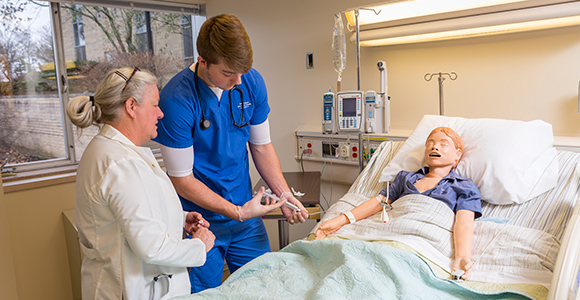Several expert MSJ Nursing faculty conducted an experimental study to investigate the effectiveness of simulation teaching in nursing education.

Five MSJ faculty were published in the Journal of International Nursing Association for Clinical Simulation & Learning (INACSL), including: Kristin Clephane DNP, RN, CPN; Carrie Heheman DNP, RN; Jamie Gardner MSN, M.Ed., RN; Susan MacPherson DNP, PNP-BC; and Rachel Baker Ph.D., RN, CP.
According to their study, these expert faculty found that simulation remains an effective teaching strategy for nursing education.
Here are the outcomes:
- Students from study rate learning from simulation as high, regardless of techniques utilized.
- Students view the use of electronic health records as favorable to their learning.
According to Associate Professor & MSN/DNP Program Director, Kristin Clephane, Mount St. Joseph University stands out in its simulation credentials for supporting student learning in the nursing program.
“Not all nursing programs provide simulation, let alone simulations that adhere to the INACSL standards (the Healthcare Simulation Standards of Best Practice),” she asserts.
With the INACSL best practice standards, nursing students participate in simulated patient experiences optimized for the purposeful achievement of learning outcomes. As such, simulations in the MSJ nursing programs provide a unique opportunity for students to practice nursing clinical judgment in a safe environment. Using the INACSL standards, simulations are designed, facilitated, and evaluated based on current evidence.

